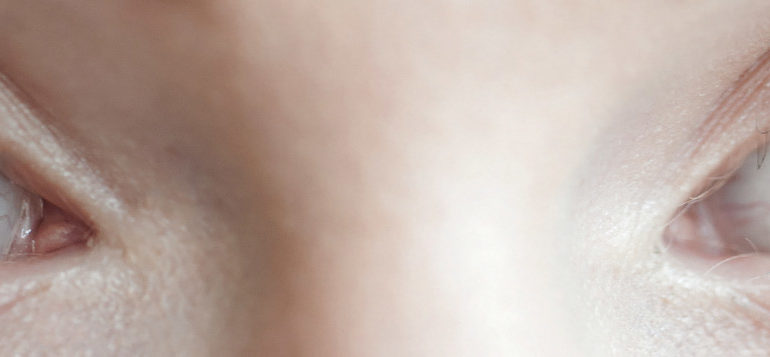The approval of a medical technology product requires absolute transparency – at least as far as critical components are concerned. You become especially aware of this when your RA department calls in, the colleagues who deal with approval requirements, and asks questions. Does the product contain phthalates? Or SVHC substances? What about biological substances? The list of possible choices here is long and, depending on the product, varies in its frequency of occurrence. It is only natural that you are not familiar with all of them.
In order to give you a better overview of the various queries for relevant substances, we will now turn our attention to the little things in life, or to be more precise, we will go down to the particle level of medical devices. Some of the following terms have been in use for years, others are newly introduced by the MDR.
1. the previously known queries
SVHC
The term “Substances of Very High Concern” (SVHC) was created by Regulation 1907/2006, better known as the REACH Regulation.
These substances are chemical compounds that have particularly hazardous properties. According to Article 57, these include:
CMR substances: carcinogenic (cancer-causing), mutagenic (mutagenic) and reproduction-toxic (affecting reproductive ability – also known under the term “teratogenic”) substances.
PBT substances: persistent (long-lived), bioaccumulative (accumulating) and toxic (poisonous) substances.
vPvB substances: very persistent (long-lived) and very bioaccumulative (accumulating) substances.
Substances that are scientifically suspected of having serious effects on human health or the environment and are of equal concern to the substances listed previously
Which substances and materials are potentially included is published by the European Chemicals Agency. The list is updated twice a year and can be found here.
The candidates on this list are in turn subject to further review and may ultimately end up in Annex XIV “List of Substances Subject to Authorization” of the REACH Regulation. This then makes the substances subject to authorization, with the following obligations for their suppliers:
The provision of a safety data sheet
The provision of information on safe use
Responding to consumer inquiries within 45 days; and
Notifying ECHA if the article they manufacture contains a substance of very high concern in quantities greater than one ton per producer/importer per year, and if the substance is present in the articles in question at a concentration greater than 0.1 percent by mass (w/w)
And this closes the circle for the request of the regulatory authority or your customers for a so-called REACH declaration or SVHC declaration. They would like you to confirm whether your product contains candidate substances or substances that are actually subject to authorization according to the regulation. If you gain new knowledge, e.g. from your supplier, it is up to you to inform your customers about this. ECHA also provides information on this.
Incidentally, this also applies if your product does not contain substances subject to authorization, but does contain substances subject to restriction according to Title VIII of the Regulation. Here, too, the current list can be found on the ECHA homepage.
Phthalates
Phthalates are a subgroup of plasticizers that are used in particular in the manufacture of plastic products. They are among the most commonly used group of plasticizers, but there are concerns and evidence of harmful health and environmental properties for some phthalates. The following phthalates are considered to have carcinogenic, mutagenic and reproductive toxic properties, as already described in the REACH regulation, and are therefore also listed in it:
DEHP = di(2-ethylhexyl) phthalate
DBP = Dibutyl phthalate
DiBP = Diisobutyl phthalate
BBP = benzyl butyl phthalate
In addition, there are restrictions on the use of the following phthalates in baby products:
DEHP, DBP and BBP, as well as diisononyl phthalate (DINP), diisodecyl phthalate (DIDP) and di-n-octyl phthalate (DNOP).
The presence of carcinogenic, mutagenic or reprotoxic phthalates was added to Directive 93/42/EEC as a labeling requirement in 2007 by Regulation 2007/47/EC.
“If parts of a product […]contain phthalates classified as carcinogenic, mutagenic or toxic to reproduction of category 1 or 2 according to Annex I of Directive 67/548/EEC, it must be indicated on the products themselves or on the unit pack or, if applicable, on the commercial packaging that the products contain phthalates.”
For the labeling of the products, DIN EN 15986 should be used here in addition to DIN EN ISO 15223-1.
For the regulations of phthalates under the MDR, Article 10.4 “Substance” is worthwhile. It is explicitly stated here under 10.4.3 that the “relevant scientific committee” to be commissioned by the Commission must submit a guideline on phthalates by May 26, 2020. This does not yet indicate how the EU will deal with phthalates in the future, but a relaxation is hardly to be expected. Therefore, as a manufacturer, it is already advisable to be aware of the presence of any phthalates in your own products.
This way, the next certification as to whether your product contains phthalates or not can also be made without any big question marks.
Biological substances
Here, most manufacturers will find it easier to decide whether their product contains a so-called biological substance or not. This is because they are either “tissues of animal origin” or “derivatives of human blood.” As these are fancy components, usually every responsible person knows whether he is concerned or not, nevertheless, we would like to devote ourselves to this confirmation as well for the sake of completeness.
For medical devices manufactured using killed animal tissues or killed products derived from animal tissues, Directive 2003/32/EC must be observed insofar as the product has body contact that goes beyond touching intact skin. The Directive specifies the requirements for this particular category of devices and thus applies alongside 93/42/EEC.
If a medical device contains substances or derivatives derived from human blood (medicinal products or blood or plasma components derived from human blood) as defined in Directive 2001/83/EC, the European Medicines Agency is also involved in the approval process in addition to the notified body.
According to Section 6.2 of Annex II of the MDR on the structure of the technical documentation, in the case of products using “tissues or cells of human or animal origin or their derivatives”, the relevant information must be included. However, it may also be assumed that some authorities (domestic or foreign) will in principle expect a statement at this point as to whether or not such substances are contained.
2. the new queries introduced by the MDR
Nanomaterial according to MDR
The term “nanoparticle” is a collective term that has been frequently used for years for advertising purposes to describe particularly small particles, some of which are said to have magical powers. However, the MDR’s rationale cites the following: “The risks and benefits of using nanomaterials in products have not been scientifically clarified.” Therefore, a uniform definition in accordance with Commission Recommendation 2011/696/EU must first be introduced.
This then reads in §2 point 18 as follows:
“Nanomaterial” means a natural material, arising or produced in processes, containing particles in an unbound state, as an aggregate or as an agglomerate, and in which at least 50% of the particles in the number size distribution have one or more external dimensions in the range 1 nm to 100 nm. Fullerenes, graphene flakes, and single-walled carbon nanotubes with one or more external dimensions less than 1 nm are also considered nanomaterials.
The possible states in which nanomaterials may be found are also further defined:
(19) ‘particle’, as used in the definition of nanomaterials in (18), means a tiny particle of a substance with defined physical limits;
(20) ‘agglomerate’, as used in the definition of nanomaterials in point 18, means a collection of weakly bound particles or aggregates in which the resulting surface area is similar to the sum of the surfaces of the individual components;
(21) ‘aggregate’, as used in the definition of nanomaterials in point 18, means a particle of tightly bound or fused particles.
If products or components fall under these definitions, the new classification rule 19 shall also be applied:
All products containing or consisting of nanomaterial shall be classified as follows:
Class III, if they have a high or medium potential for internal exposure;
Class IIb, if they have a low potential for internal exposure; and
Class IIa, if they have an insignificant potential for internal exposure.
And for demonstrating compliance with the essential safety and performance requirements, explicitly note:
Unless they come into contact only with unbroken skin, devices are designed and manufactured to reduce as much as possible the risks associated with the size and properties of the particles that penetrate or may penetrate the patient’s or user’s body. Particular attention must be paid to nanomaterials.
Currently, there is no custom or requirement for a separate declaration of the presence of nanomaterials. However, practice will show whether this will become common in the future or, if necessary, covered in a joint declaration around the material properties addressed here.
CMR substances in the MDR
The attentive reader will now say: We have already had that! Well, the term CMR substances was already used at the beginning in the context of SVHC substances and explained in more detail. In the context of the MDR, there is no definition of its own under § 2, but there is an indirectly linked one in Annex I with the following basic requirement:
The products or the product components contained therein or the materials used therein […] shall not contain the following substances in a concentration exceeding 0.1% by mass unless justified in accordance with section 10.4.2:
carcinogens, mutagens or substances toxic to reproduction (“CMR substances”) of category 1A or 1B as defined in Part 3 of Annex VI to Regulation (EC) No 1272/2008 of the European Parliament and of the Council (1), or …
At that time, the above-mentioned regulation had included an amendment to the REACH regulation. Nevertheless, manufacturers should carefully check whether the sum of CMR substances is congruent in both cases. A holistic consideration is certainly advisable.
Also the justification according to requirement 10.4.2 wants to be neatly worked out and available in case of need. A mere declaration of existence is not sufficient, but must be part of the technical documentation according to Annex II 6.2.d). In addition, an appropriate precautionary statement according to the essential requirement 23.4.s) must also be provided on the product to inform the patient and user of its presence.
3. the future queries
Just stay on the ball
Based on the fact that all definitions containing the basis for the declarations or application justifications, you should always stay on the ball whether there have been relevant innovations for your products, so that materials or components not yet affected could possibly be included in the future. This is because the above-mentioned regulations are subject to the constant change of technical progress and can be revised, supplemented or tightened. In the case of nanomaterials, for example, the Commission is given the power to adopt delegated acts to amend the definitions. And it is also clear from the various regulations around CMR substances that changes can be introduced at any time.
How to stay on the ball? Simple. The RA experts at seleon GmbH provide information on innovations on this blog. Or you can follow us on LinkedIN or XING. Even easier: Get in touch with us.
Please note that all information and listings do not claim to be complete, are without guarantee and are for information purposes only.




